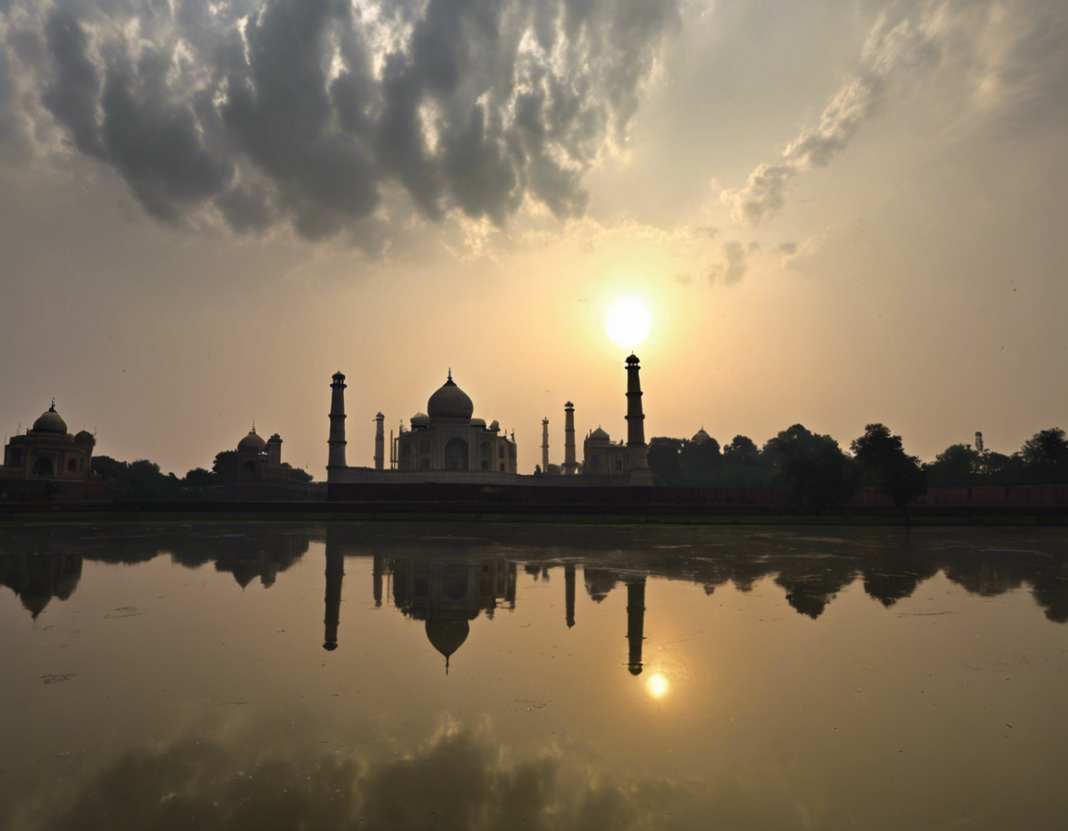Agra, a city located in the northern state of Uttar Pradesh in India, is known for its rich history, stunning architecture, and as the home of the iconic Taj Mahal. The weather in Agra is characterized by its extreme temperatures, with scorching summers and chilly winters. In this blog post, we will delve into the weather in Agra, providing forecast and updates to help you better plan your trip to this historic city.
Understanding Agra’s Climate:
Agra experiences a typical North Indian climate, with three major seasons: summer, monsoon, and winter. Here’s a breakdown of each season:
Summer (April to June):
Summer in Agra is exceptionally hot, with temperatures soaring above 40°C (104°F). The scorching heat combined with high humidity levels can make sightseeing uncomfortable during this time. It is advisable to carry light and breathable clothing, sunglasses, and sunscreen if you plan to visit Agra during the summer months.
Monsoon (July to September):
The monsoon season in Agra provides relief from the heat, with occasional rainfall making the weather relatively cooler. However, heavy showers can lead to waterlogging in certain areas, impacting travel plans. It is recommended to carry an umbrella or raincoat during this time.
Winter (October to March):
Winters in Agra are characterized by pleasant weather, with temperatures ranging between 8°C to 24°C (46°F to 75°F). The cool breeze and clear skies make it an ideal time to explore the city’s attractions, especially the Taj Mahal. Warm clothing is essential during the winter months to stay comfortable outdoors.
Weather Forecast and Updates:
To help you plan your visit to Agra effectively, it is crucial to stay updated on the weather forecast. Several online platforms and mobile applications provide real-time weather updates for Agra, including temperature, humidity levels, wind speed, and chances of precipitation. Before traveling to Agra, it is advisable to check the latest weather forecast to pack accordingly and avoid any inconvenience during your trip.
Tips for Visiting Agra in Different Seasons:
- Summer: Visit monuments early in the morning or late in the evening to avoid the peak heat hours.
- Monsoon: Keep an eye on weather forecasts and be prepared for sudden showers.
- Winter: Enjoy outdoor activities during the day and experience the mesmerizing beauty of the Taj Mahal during sunrise or sunset.
Frequently Asked Questions (FAQs) about the Weather in Agra:
-
What is the best time to visit Agra weather-wise?
The best time to visit Agra is during the winter months from October to March when the weather is pleasant and ideal for sightseeing. -
Does Agra experience extreme weather conditions?
Agra experiences extreme heat during summer and cold temperatures in winter, making it essential to pack accordingly based on the season of your visit. -
How accurate are weather forecasts for Agra?
Weather forecasts for Agra are relatively accurate, but it is recommended to check for real-time updates closer to your travel dates for precise information. -
Can the weather in Agra impact outdoor activities?
Yes, extreme weather conditions like heatwaves in summer or heavy rainfall during the monsoon season can impact outdoor activities, so it’s essential to plan accordingly. -
Are there any specific clothing recommendations for visiting Agra?
Light and breathable clothing is recommended for summer, while warm clothing is necessary for winter months. Carrying an umbrella or raincoat is advisable during the monsoon season. -
Is it safe to visit Agra during the monsoon season?
While visiting Agra during the monsoon season is possible, it is important to stay updated on weather forecasts and be prepared for rains and potential disruptions to travel plans. -
How does the weather impact the visibility of the Taj Mahal?
Clear skies and pleasant weather, typically during winter months, provide the best visibility and photographic opportunities of the Taj Mahal. -
Are there any precautions to take during extreme weather conditions in Agra?
During extreme heat, stay hydrated and avoid prolonged exposure to the sun. In cold weather, dress warmly and protect yourself from the chilly winds. -
Does Agra have any microclimates to be aware of?
Agra does not have significant microclimates, but temperature variations can occur based on the city’s urban areas and surrounding green spaces. -
Can weather conditions impact the timings of tourist attractions in Agra?
Weather conditions like heavy rainfall or foggy mornings can sometimes lead to delays in opening hours or limited visibility at tourist attractions, so it’s advisable to plan accordingly.
In conclusion, being aware of the weather in Agra and staying informed about forecast updates can enhance your travel experience and ensure a comfortable stay in this historically rich city. By following the provided tips and guidelines, you can plan your trip effectively and make the most of your visit to Agra, whether you’re exploring its architectural marvels or soaking in its vibrant culture.

